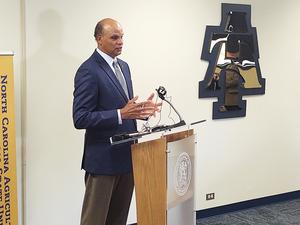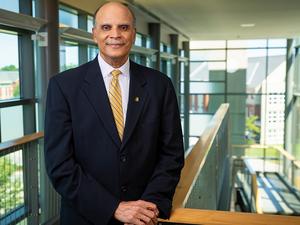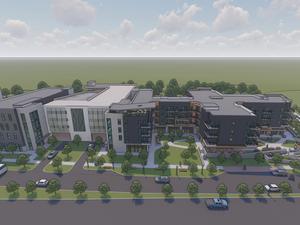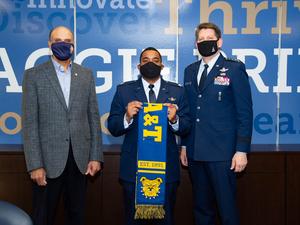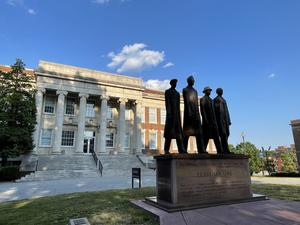
North Carolina Agricultural and Technical State University unveiled state-of-the-art facilities and advanced technological capabilities at the opening of the Harold L. Martin Sr. Engineering Research and Innovation Complex.
The $90 million, 130,000 square-foot Martin Complex, named for A&T’s current chancellor, will allow the university to continue to a be leader in STEM education as it promotes innovation and collaboration among faculty, students and staff.
Highlights include a virtual reality studio, driving simulator, a robotic autonomy lab and a cyber defense and artificial intelligence (AI) laboratory.
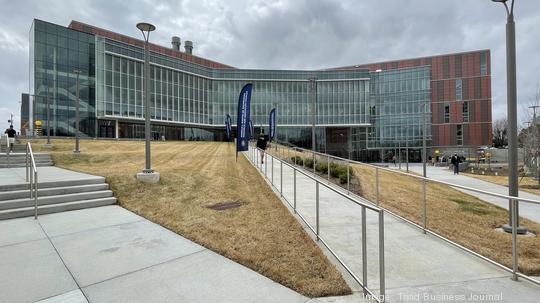
N.C. A&T is recognized as the top producer of Black engineers in the United States. The university’s College of Engineering has 2,316 students and 96 faculty members.
The four-floor building will include seven academic departments from the college of engineering.
The Martin Complex, which sits at the intersection of East Market and Dudley streets on the nothwest corner of the A&T campus, is equipped with cutting-edge technology, open-concept laboratories, large classrooms, high bay areas and maker spaces. The building also features faculty and staff offices as well as numerous study spaces and lounges for students.
Technology highlights
N.C. A&T is the first historically Black university (HBCU) to implement a 3D holographic design studio, powered by ARHT Media. The studio is a virtual reality environment that uses augmented reality and sensor fusion data to project life-like videos.
Salil Desai, studio director and professor of industrial and systems engineering, will guide his research team in using the system for product design and development, digital twinning, medical diagnoses and social engagement.
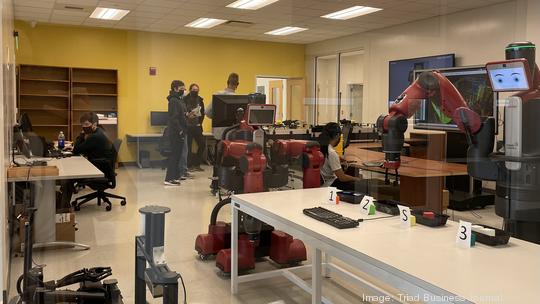
Another noteworthy feature is a vehicle-in-the-loop driving simulator. Housed in the complex’s Reality Emulation and Augmentation Laboratory (REAL), the simulator allows researchers to mimic real-world driving conditions and scenarios that can be tested in a controlled environment.
With the rise of semi-autonomous and autonomous cars on the road, this simulator will allow a research team, headed by Professor of Electrical and Computer Engineering Ali Karimmodini, to simulate car accidents, analyze driving behaviors and monitor a driver’s perception as well as decision and response rates.
The Martin Complex is also home to a new Facility for Intelligent Robotics, Sensing and Telepresence (FIRST). Coordinated by mechanical engineering professor Sun Yi, the facility includes Digit, a humanoid robot designed to move in a more dynamic fashion than typical robots, and Spot, a four-legged canine-like robot from Boston Dynamics.
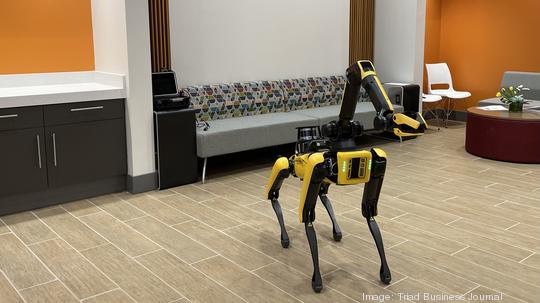
Nimble limbs and a torso packed with sensors allow Digit to navigate complex environments and carry out tasks. Digit has feet with improved balance and stability, a load-carrying capacity of 40 pounds and sealed joints for all-weather outdoor operation.
Making of the Martin Complex
The Martin Complex was made possible through the $2 billion Connect NC Bond, which passed in 2016 and funded numerous projects across the state, including construction projects for community colleges and support for the expansion of STEM offerings at several universities.
From the Connect NC Bond, A&T received $90 million to bolster its development and training of engineering students and to enhance the research productivity of prominent faculty researchers.
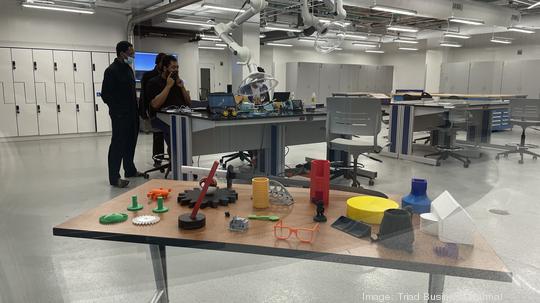
“The investment being made and unveiled today is really a testament to the confidence of our governor, our legislature, our city elected officials, our alumni and business leaders who are assisting us in remarkable and untold ways as we continue to push beyond the possibilities for the future of the university, this community, this region and this state,” Martin said.
Construction, headed by Balfour Beatty, began in fall of 2018 and was completed in two years and under budget. The building was designed by EYP, Inc.
The opening of the Martin Complex was attended by many dignitaries, including Gov. Roy Cooper, Guilford Board of Commissioners Chairman Skip Alston, Greensboro Mayor Nancy Vaughan, U.S. Rep. Kathy Manning, N.C. Sen. Gladys Robinson, N.C. Secretary of Environmental Quality Elizabeth Biser, and A&T Chancellor Emeritus Edward Fort.
